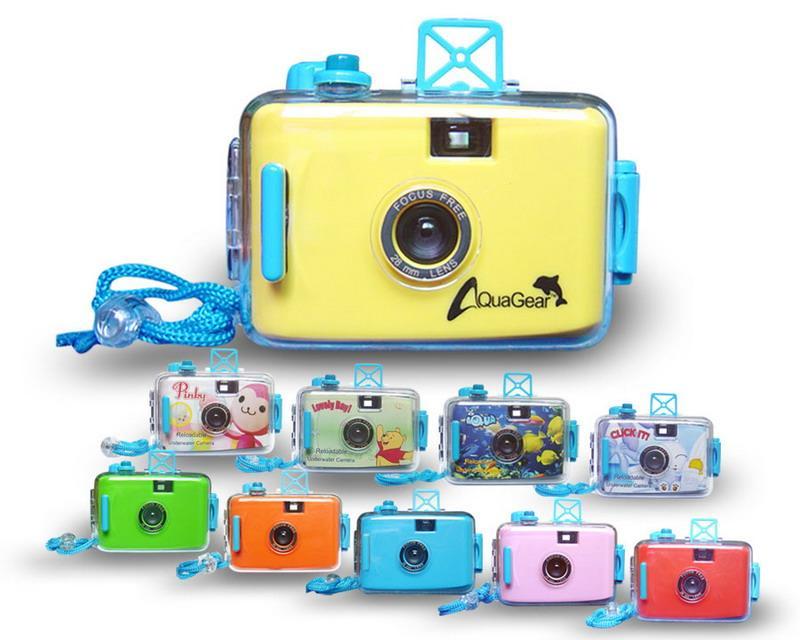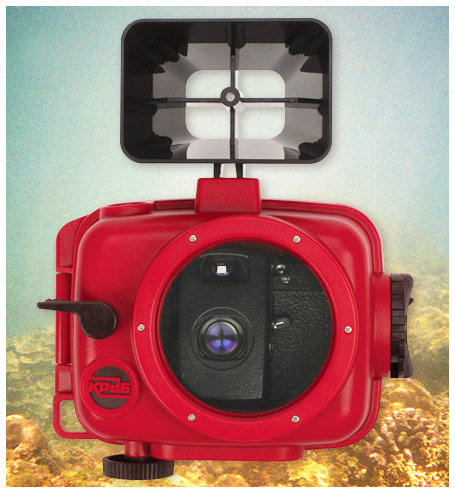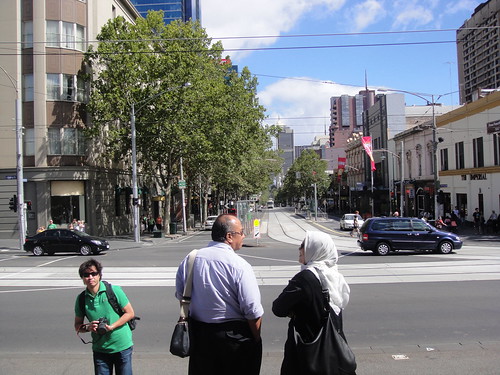Penulis: Ummu Hamzah
Muroja’ah: Ustadz Abu ‘Ukkasyah Aris Munandar
Pada tulisan yang telah lalu telah dibahas mengenai hal-hal yang diharomkan bagi wanita haid. Pada tulisan bagian kedua ini, akan dipaparkan tiga permasalahan penting terkait wanita haid, yaitu mengenai boleh tidaknya wanita haid masuk ke dalam masjid serta menyentuh dan membaca Al Qur’an.
Bolehkah seorang wanita yang sedang haid masuk dan duduk di dalam masjid ?
Sebagian ulama melarang seorang wanita masuk dan duduk di dalam masjid dengan dalil:
لاَأُحِلُّ الْمَسْجِدُ ِلحَائِضٍُ وَلا َجُنُبٍ
“Aku tidak menghalalkan masjid untuk wanita yang haidh dan orang yang junub.” (Diriwayatkan oleh Abu Daud no.232, al Baihaqi II/442-443, dan lain-lain)
Akan tetapi hadits di atas merupakan hadits dho’if (lemah) meski memiliki beberapa syawahid (penguat) namun sanad-sanadnya lemah sehingga tidak bisa menguatkannya dan tidak dapat dijadikan hujjah. Syaikh Albani -rahimahullaah- telah menjelaskan hal tersebut dalam ‘Dho’if Sunan Abi Daud’ no. 32 serta membantah ulama yang menshahihkan hadits tersebut seperti Ibnu Khuzaimah, Ibnu al Qohthon, dan Asy Syaukani. Beliau juga menyebutkan ke-dho’if-an hadits ini dalam Irwa’ul Gholil’ I/201-212 no. 193.
Berikut ini sebagian dalil yang digunakan oleh ulama yang membolehkan seorang wanita haid duduk di masjid (Jami’ Ahkamin Nisa’ I/191-192):
1.Adanya seorang wanita hitam yang tinggal di dalam masjid pada zaman Nabi shallallahu’alaihi wa sallam. Namun tidak ada dalil yang menyatakan bahwa Nabi shallallahu’alaihi wa sallam memerintahkannya untuk meninggalkan masjid ketika ia mengalami haidh.
2.Sabda Nabi shallallahu’alaihi wa sallam kepada ‘Aisyah radhiyallahu’anha, “Lakukanlah apa yang bisa dilakukan oleh orang yang berhaji selain thowaf di Baitullah.” Larangan thowaf ini dikarenakan thowaf di Baitullah termasuk sholat, maka wanita itu hanya dilarang untuk thowaf dan tidak dilarang masuk ke dalam masjid. Apabila orang yang berhaji diperbolehkan masuk masjid, maka hal tersebut juga diperbolehkan bagi seorang wanita yang haidh.
Kesimpulan:
Wanita yang sedang haid diperbolehkan masuk dan duduk di dalam masjid karena tidak ada dalil yang jelas dan shohih yang melarang hal tersebut. Namun, hendaknya wanita tersebut menjaga diri dengan baik sehingga darahnya tidak mengotori masjid.
Bolehkah seorang wanita yang sedang haid membaca Al Qur’an (dengan hafalannya) ?
Sebagian ulama berpendapat bahwa wanita yang haid dilarang untuk membaca Al Qur’an (dengan hafalannya) dengan dalil:
لاَ تَقرَأِ الْحَا ءضُ َوَلاََ الْجُنُبُ شَيْئًا مِنَ الْقُرْانِ
“Orang junub dan wanita haid tidak boleh membaca sedikitpun dari Al Qur’an.” (Diriwayatkan oleh Imam Tirmidzi I/236; Al Baihaqi I/89 dari Isma’il bin ‘Ayyasi dari Musa bin ‘Uqbah dari Nafi’ dari Ibnu ‘Umar)
Al Baihaqi berkata, “Pada hadits ini perlu diperiksa lagi. Muhammad bin Ismail al Bukhari menurut keterangan yang sampai kepadaku berkata, ‘Sesungguhnya yang meriwayatkan hadits ini adalah Isma’il bin Ayyasi dari Musa bin ‘Uqbah dan aku tidak tahu hadits lain yang diriwayatkan, sedangkan Isma’il adalah munkar haditsnya (apabila) gurunya berasal dari Hijaz dan ‘Iraq’.”
Al ‘Uqaili berkata, “Abdullah bin Ahmad berkata, ‘Ayahku (Imam Ahmad) berkata, ‘Ini hadits bathil. Aku mengingkari hadits ini karena adanya Ismail bin ‘Ayyasi’ yaitu kesalahannya disebabkan oleh Isma’il bin ‘Ayyasi’.”
Syaikh Al Albani berkata, “Hadits ini diriwayatkan dari penduduk Hijaz maka hadits ini dhoif.” (Diringkas dari Larangan-larangan Seputar Wanita Haid dari Irwa’ul Gholil I/206-210)
Kesimpulan dari komentar para imam ahli hadits mengenai hadits di atas adalah sanad hadits tersebut lemah sehingga tidak dapat digunakan sebagai dalil untuk melarang wanita haid membaca Al Qur’an.
Hadits dari ‘Aisyah radhiyallahu’anha beliau berkata, “Aku datang ke Mekkah sedangkan aku sedang haidh. Aku tidak melakukan thowaf di Baitullah dan (sa’i) antara Shofa dan Marwah. Saya laporkan keadaanku itu kepada Rasulullah shallallahu’alaihi wa sallam, maka beliau bersabda, ‘Lakukanlah apa yang biasa dilakukan oleh haji selain thowaf di Baitullah hingga engkau suci’.” (Hadits riwayat Imam Bukhori no. 1650)
Seorang yang melakukan haji diperbolehkan untuk berdzikir dan membaca Al Qur’an. Maka, kedua hal tersebut juga diperbolehkan bagi seorang wanita yang haid karena yang terlarang dilakukan oleh wanita tersebut -berdasar hadits di atas- hanyalah thowaf di Baitullah. (Jami’ Ahkamin Nisa’ I/183)
Kesimpulan:
Wanita yang sedang haid diperbolehkan untuk berdzikir dan membaca Al Qur’an karena tidak ada dalil yang jelas dan shohih dari Rasulullah shallallahu’alaihi wa sallam yang melarang hal tersebut. Wallahu Ta’ala a’lam.
Bolehkah seorang wanita yang sedang haid menyentuh mushhaf Al Qur’an ?
Telah terjadi perselisihan pendapat di kalangan ulama. Ulama yang melarang hal tersebut berdalil dengan ayat:
لاَّ يَمَسَّةُ إِلاَّ الْمُطَهَّرُونَ
Artinya:
“Tidak menyentuhnya kecuali hamba-hamba yang disucikan.” (QS. Al Waqi’ah: 79)
يَمُسُّ maksudnya adalah menyentuh mushhaf al Qur’an. المُطَهَّرُونَ maksudnya adalah orang-orang yang bersuci. Oleh karena itu tidak boleh menyentuh mushaf al Qur’an kecuali bagi orang-orang yang telah bersuci dari hadats besar atau kecil.
Mereka juga berdalil dengan hadits Abu Bakar bin Muhammad bin ‘Amr bin Hazm dari bapaknya dari kakeknya bahwasanya Nabi shallallahu’alaihi wa sallam menulis surat kepada penduduk Yaman dan di dalamnya terdapat perkataan:
لاَّ يَمَسُّ الْقُرْاَنَ إِلاَّ طَا هِرٌ
“Tidak boleh menyentuh Al Qur’an kecuali orang yang suci.” (Hadits Al Atsram dari Daruqutni)
Sanad hadits ini dho’if namun memiliki sanad-sanad lain yang menguatkannya sehingga menjadi shahih li ghairihi (Irwa’ul Ghalil I/158-161, no. 122)
Ulama yang membolehkan wanita haid menyentuh mushhaf Al Qur’an memberikan penjelasan sebagai berikut:
إِنَّهُ لَقُرْءَانٌ كَرِيْمٌ فِي كِتَابٍ مَّكْنُو نٍ لاَّ يَمَسَّهُ إِلاَّ الْمُطَهَّرُونَ تَتِريلٌ مِّن رَّبِّ الْعَا لَمِينَ
Artinya:
“Sesungguhnya Al qur’an ini adalah bacaan yang sangat mulia pada kitab yang terpelihara. Tidak menyentuhya kecuali (hamba-hamba) yang disucikan. Diturunkan oleh Robbul ‘Alamin.” (QS. Al Waqi’ah: 77-80)
Kata ganti ﻪ (-nya pada “Tidak menyentuhnya”) kembali kepada ﻛﺘﺎﺏ ﻣﻜﻨﻮﻥ (Kitab yang terpelihara). Ibnu ‘Abbas, Jabir bin Zaid, dan Abu Nuhaik berkata, “(yaitu) kitab yang ada di langit”.
Adh Dhahhak berkata, “Mereka (orang-orang kafir) menyangka bahwa setan-setanlah yang menurunkan Al Qur’an kepada Muhammad shallallaahu’alaihi wa sallam, maka Allah memberitakan kepada mereka bahwa setan-setan tidak kuasa dan tidak mampu melakukannya.” (Tafsir Ath Thobari XI/659).
Mengenai ﺍﻟﻤُﻄَﻬَّﺮُﻭﻥَ menurut pendapat beberapa ulama, di antaranya:
1.Ibnu ‘Abbas berkata, “Adalah para malaikat. Demikian pula pendapat Anas, Mujahid, ‘Ikrimah, Sa’id bin Jubair, Adh Dhahhak, Abu Sya’tsa’ , Jabir bin Zaid, Abu Nuhaik, As Suddi, ‘Abdurrohman bin Zaid bin Aslam, dan selain mereka.” [Tafsir Ibnu Katsir (Terj.)]
2.Ibnu Zaid berkata, “yaitu para malaikat dan para Nabi. Para utusan (malaikat) yang menurunkan dari sisi Allah disucikan; para nabi disucikan; dan para rasul yang membawanya juga disucikan.” (Tafsir Ath Thobari XI/659)
Imam Asy Syaukani berkata dalam Nailul Author, Kitab Thoharoh, Bab Wajibnya Berwudhu Ketika Hendak Melaksanakan Sholat, Thowaf, dan Menyentuh Mushhaf: “Hamba-hamba yang disucikan adalah hamba yang tidak najis, sedangkan seorang mu’min selamanya bukan orang yang najis berdasarkan hadits:
الْمُؤْمِنُ لاَ يَنْجُسُ
“Orang mu’min itu tidaklah najis.” (Muttafaqun ‘alaih)
Maka tidak sah membawakan arti (hamba) yang disucikan bagi orang yang tidak junub, haid, orang yang berhadats, atau membawa barang najis. Akan tetapi, wajib untuk membawanya kepada arti: Orang yang tidak musyrik sebagaimana dalam firman Allah Ta’ala yang artinya, “Sesungguhnya orang-orang musyrik itu najis.” (QS. At Taubah: 28)
Di samping itu lafadz yang digunakan dalam ayat tersebut adalah dalam bentuk isim maf’ul-nya (orang-orang yang disucikan), bukan dalam bentuk isim fa’il (orang-orang yang bersuci). Tentu hal tersebut mengandung makna yang sangat berbeda.
Mengenai hadits “Tidak boleh menyentuh Al Qur’an kecuali orang yang suci”, Syaikh Nashiruddin Al Albani rahimahullah berkata, “Yang paling dekat -Wallahu a’lam- maksud “orang yang suci” dalam hadits ini adalah orang mu’min baik dalam keadaan berhadats besar, kecil, wanita haid, atau yang di atas badannya terdapat benda najis karena sabda beliau shallallahu’alaihi wa sallam: “Orang mu’min tidakah najis” dan hadits di atas disepakati keshahihannya. Yang dimaksudkan dalam hadits ini (yaitu hadits Tidak boleh menyentuh Al Qur’an kecuali orang yang suci) bahwasanya beliau melarang memberikan kuasa kepada orang musyrik untuk menyentuhnya, sebagaimana dalam hadits:
نَهَى أَنْ يُسَا فَرَ بِا لْقُرْانِ إِلَى أَرْضِ اْلعَدُو
“Beliau melarang perjalanan dengan membawa Al Qur’an menuju tanah musuh.” (Hadits riwayat Bukhori). (Dinukil dari Larangan-larangan Seputar Wanita Haid dari Tamamul Minnah, hal. 107).
Meski demikian, bagi seseorang yang berhadats kecil sedang ia ingin memegang mushaf untuk membacanya maka lebih baik dia berwudhu terlebih dahulu. Mush’ab bin Sa’ad bin Abi Waqash berkata, “Aku sedang memegang mushhaf di hadapan Sa’ad bin Abi Waqash kemudian aku menggaruk-garuk. Maka Sa’ad berkata, ‘Apakah engkau telah menyentuh kemaluanmu?’ Aku jawab, ‘Ya.’ Dia berkata, ‘Berdiri dan berwudhulah!’ Maka aku pun berdiri dan berwudhu kemudian aku kembali.” (Diriwayatkan oleh Imam Malik dalam Al Muwaththa’ dengan sanad yang shahih)
Ishaq bin Marwazi berkata, “Aku berkata (kepada Imam Ahmad bin Hanbal), ‘Apakah seseorang boleh membaca tanpa berwudhu terlebih dahulu?’ Beliau menjawab, ‘Ya, akan tetapi hendaknya dia tidak membaca pada mushhaf sebelum berwudhu”.
Ishaq bin Rahawaih berkata, “Benar yang beliau katakan, karena terdapat hadits yang dari Nabi shallallahu’alaihi wa sallam. Beliau bersabda, ‘Tidak boleh menyentuh Al Qur’an kecuali orang yang suci’ dan demikian pula yang diperbuat oleh para shahabat Nabi shallallahu’alaihi wa sallam.” (Dari Larangan-larangan Seputar Wanita Haid, dari Irwaul Gholil I/161 dari Masa’il Imam Ahmad hal. 5)
Abu Muhammad bin Hazm dalam Al Muhalla I/77 berkata, “Menyentuh mushhaf dan berdzikir kepada Allah merupakan ibadah yang diperbolehkan untuk dilakukan dan pelakunya diberi pahala. Maka barangsiapa yang melarang dari hal tersebut, maka ia harus mendatangkan dalil.” (Jami’ Ahkamin Nisa’ I/188).
Kesimpulan:
Wanita yang sedang haid diperbolehkan menyentuh mushhaf Al Qur’an karena tidak ada dalil yang jelas dan shohih yang melarang hal tersebut. Wallaahu Ta’ala A’lam.
Rujukan:
1.Larangan-larangan Seputar Wanita Haid, artikel Majalah As Sunnah 01/ IV/ 1420-1999, Abu Sholihah Muslim al Atsari.
2.Jami’ Ahkamin Nisa’, Syaikh Musthofa al ‘Adawi.
3.Tafsir Al Qur’an Al ‘Adziim (Terj. Tafsir Ibnu Katsir Jilid 8), Ibnu Katsir.
sumber :
http://muslimah.or.id/fikih/hukum-seputar-darah-wanita-haid.html
regards, taniafdi ^_^





















